UP TO THE MINUTE
Battle of the specialty metal roofing materials
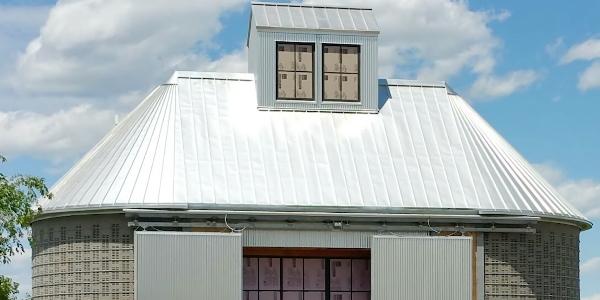
By Sheffield Metals.
Which specialty metal roofing material is best suited for your project needs? Experts compare zinc, copper and stainless steel.
Many contractors and building owners use the standard Galvalume steel and aluminum metal panels in their projects, which are average and provide standard results. However, there are many metal roofing materials on the market that can provide building owners with fantastic results, both aesthetically and durability wise.
Specialty metals, while less common, are options that are offered by several sheet and coil manufacturers. These metals include zinc, copper and stainless steel.
If you’re considering one of these specialty metals for your project, how do you know if it’s the right choice? What are the specific pros and cons of each metal option? What should you keep in mind before you purchase?
Our primary product offerings at Sheffield Metals are painted and bare Galvalume and aluminum coils and sheets used in the standing seam metal roof and wall industry. However, we also distribute some specialty metals too — including copper. Plus, we know how important it is for you to be an educated buyer with something as important as your roofing structure, so let’s dive into the details of zinc, copper and stainless-steel metal roofing.
Zinc metal roofing
Zinc is a lustrous bluish-white metal and is the 24th most abundant element in the Earth’s crust. According to geogly.com, zinc is currently the fourth most widely consumed metal in the world after iron, aluminum and copper.
Zinc is a material option that is relatively common in the standing seam metal roofing industry in Europe and is gaining popularity in the U.S., as it’s designed to withstand the elements, has self-healing characteristics and is environmentally friendly.
Pros of zinc roofing
Longevity – Zinc roofs have been known to last anywhere from 60 to 100 years. Studies have shown that zinc roofin g could sometimes last up to 150 years, depending on the quality of installation, building properties and climate.
g could sometimes last up to 150 years, depending on the quality of installation, building properties and climate.
Ecofriendly – Since zinc is a natural metal extracted from the ground, zinc’s toxicity levels are low, even after fabrication. Homeowners and business owners do not have to worry about toxic run-off or ground pollution surrounding their zinc roofing. Additionally, zinc is a non-ferrous metal, meaning it does not contain iron and therefore requires less energy to manufacture.
Self-healing characteristics – Zinc has an outer protective layer that prevents corrosion, scratching and other panel markings. If wind or another element were to scratch the surface of the zinc roof, the metal’s protective layer would fix and correct itself over time.
Easy to form – Architects and contractors often use zinc in their projects because it’s a softer metal and can be easily shaped into different profiles for rollforming, gutter forming and seam creation.
Limited warranty options – Zinc can come with some limited substrate warranty options. However, checking with your roofing material manufacturer is critical, as the warranty options will vary and often depend on specific environmental variables.
Cons of zinc roofing
Expensive – The most prominent drawback to zinc roofing is the price. While many variables factor into the cost and prices continue to fluctuate, zinc roofing can cost anywhere from $650 to $1100 per roofing square (100 square feet).
Underside corrosion – If the zinc roofing is improperly coated on the underside and water molecules get trapped underneath/between the panels and the insulation or underlayment, the zinc metal can corrode.
Ventilation concerns – All zinc applications require adequate ventilation to help prevent the system from failing from the inside (or underside) out. Above deck ventilation products, such as Sharkskin Ventilated Mat or Enkamat, combined with using the appropriate installation details, will contribute to the longevity of a zinc system. The correct ventilation process for zinc roofing is more of a precaution than a disadvantage.
Expansion and contraction concerns – In climates with striking temperature differences, zinc roofing often expands and contracts during heating and cooling cycles more than aluminum metal systems. Your contractor should ensure that your system can accommodate this thermal movement.
Limited engineering options – There are limited uplift-tested options available for most types of zinc standing seam metal roofs. If you find one, it will most likely be a mechanical seam and not a snap-lock profile.
Copper metal roofing
Copper is a reddish-orange metal that is malleable, ductile and has very high thermal and electrical conductivity.
The use of copper roofing has been around for hundreds — if not thousands — of years. Historical data shows that the Romans used copper covering on the roof of the Pantheon in 27 B.C.
Today, copper is used as an eye-catching roofing material on architectural projects, commercial buildings and even residential homes. Plus, many property owners utilize copper as an accent portion of their roof or have copper cupolas, chimney caps, awnings and more.
Pros of copper roofing
Lightweight – Compared to different metal substance s and other roofing materials such as shingles, concrete or tiles, copper is extremely lightweight. Not only does this make it easier for installers and contractors to work with, but it also puts less stress on the structure of a home over time.
s and other roofing materials such as shingles, concrete or tiles, copper is extremely lightweight. Not only does this make it easier for installers and contractors to work with, but it also puts less stress on the structure of a home over time.
Durability – Copper is a durable element and can withstand numerous decades as a roof. If properly installed, copper roofing can last 100+ years in some instances. Copper also works well in locations with heavy snow, frequent rainfall and strong winds.
Aesthetically pleasing – Copper is often referred to as a premium roofing material, as it enriches the outside of a building and adds a metallic reddish-orange/brown focal point to a structure. As the copper ages, it develops a blue-green covering called patina, which happens because of oxidation and sun exposure. Many building owners specifically buy copper because of how it ages and adds to the curb appeal of a structure over time.
Highly recyclable – Though not as recyclable as zinc, copper can be recycled and reused if still in good condition. Copper is also a naturally sourced metal and can be used in its original mined metallic form.
Solderable – Copper can be soldered, unlike other roofing materials. This means roof/wall flashings and gutter joints can be weather-tight with a soldered connection.
Limited warranty options – Coated copper material can come with limited substrate warranty options. However, most bare copper products do not have a substrate warranty. Again, verifying the available warranty options with your manufacturer is always best.
Cons of copper roofing
Very expensive – Copper is one of the costliest metal roof materials, as copper is not as abundant on the Earth. Plus, the price of copper fluctuates almost week by week. You can expect copper roofing to cost about $600 to $1,100 per roofing square (100 square feet).
price of copper fluctuates almost week by week. You can expect copper roofing to cost about $600 to $1,100 per roofing square (100 square feet).
Expansion and contraction concerns – In climates with striking temperature differences, copper roofing expands and contracts during heating and cooling cycles (more than steel but less than aluminum metal systems). Your contractor should ensure that your system will be able to accommodate this thermal movement.
Unpredictable patina – Some people are drawn to the look of the patina that will happen on a copper roof, but some might not want this greenish-blue covering on their home or structure. There is currently no exact science to predict the color or time frame that patina will occur with copper. In some climates, the patina will turn a rich green; in other environments, it will maintain a dark bronze look for decades.
Run-off staining – Copper roof rain run-off is known to stain siding, brick, concrete, other metals, wood, etc. Home or business owners need to be aware of this factor and ensure the contractors install the roof so the water can safely run off it without coming into contact with other stainable materials.
Dissimilar metals issues – Copper roofing, and copper products in general, do not interact well with most other metal products used in roofing. It is important to know what products are used in the entire roof assembly to prevent dissimilar metal corrosion. This includes water run-off from the copper onto dissimilar metals as well.
Limited engineering options – There are limited uplift-tested options available for most types of copper standing seam metal roof systems. If you find one, it will most likely be a mechanical seam profile (and not a snap-lock).
Stainless steel metal roofing
Stainless steel is an iron alloy made up of at least 10.5% chromium and contains other elements (such as carbon) and metals/materials to obtain desired properties.
When people think of stainless steel, they often think of large architectural structures such as elevators, bridges, building columns, handrails, etc. Or perhaps their kitchen appliances, cutlery, cookware or beyond.
However, stainless steel is also an option in the metal roofing industry — primarily because this material is known for its strength — which makes it a high-end specialty metal that could be the right material choice for some projects.
Pros of stainless-steel roofing
Durability – As mentioned before, stainless steel is use d in some of the world’s most powerful and sturdy metal products. Because stainless steel can withstand corrosion and degradation for 60+ years, it makes an excellent choice for metal roofing.
d in some of the world’s most powerful and sturdy metal products. Because stainless steel can withstand corrosion and degradation for 60+ years, it makes an excellent choice for metal roofing.
Weathers elements – Stainless steel is specifically designed to withstand extreme weather and temperature climates. In addition to efficiently reflecting thermal temperatures away from a building, stainless steel doesn’t become brittle or crack during cold temperatures and keeps the warm air from escaping a structure.
Variety of finish options – Stainless steel comes in a variety of different finishes, which makes it easier to match a multitude of other building materials. It can range anywhere from a dull, subtle gray similar to zinc roofing, to a highly reflective, polished finish resembling a mirror.
Other uses (indoors) – Due to stainless steel’s flawless look and timelessness, some designers specify this material as a standing seam accent piece (or wall) to install on the inside of larger commercial or architectural buildings.
Cons of stainless-steel roofing
No substrate warranty – One of the significant drawbacks to stainless steel is that it doesn’t carry a substrate warranty. Remember that a stainless-steel roof may perform well if handled and installed correctly, but it doesn’t come with that additional guarantee in the form of a substrate warranty.
Expensive – The cost of stainless steel is in line with the price of zinc and copper, making it a high-end metal roofing choice. Stainless steel roofing can cost anywhere from $500 to $1,300 per roofing square (100 square feet), depending on the finish, panel type and thickness.
Expansion and contraction concerns – In climates with striking temperature differences, stainless steel roofing systems expand and contract during heating and cooling cycles (more than galvanized steel but less than aluminum). Your contractor should ensure that your system can accommodate this thermal movement.
Not recommended where there is standing water – Roofing made with stainless steel, especially if it’s in contact with other non-stainless-steel metals, requires adequate draining methods to remain durable and functional. Too much standing water on stainless steel can act as an electrolyte and cause galvanic corrosion.
Important considerations for specialty metal roofing materials
1 - Find a reputable contractor with experience installing your chosen specialty metal. 
One of the most important parts of purchasing any standing seam metal roof is finding a qualified, skilled and experienced contractor to install it. Suppose you choose a specialty metal such as zinc, copper or stainless steel. In that case, hiring a contractor with experience and a proven track record of working with these materials is imperative. These materials are temperamental and not always easy to work with, so it’s critical to hire a professional who understands how to work with and install specialty metal roofs.
Luckily, most contracting businesses list their product/installation capabilities on their website and should also be able to provide you with examples of previous work they’ve completed. Check out this extensive article about finding the right roofing contractor for your project.
2 - Always make sure to use the appropriate accessories for the system.
Installing a metal accessory or component that isn’t compatible with the metal material of the roof itself is always a concern. For example, if you tried to install an aluminum clip with a copper metal roofing system, it would likely cause the roof to fail from corrosion.
For reference, combining different metals on a metal roof system can lead to interactions that could result in early degradation, staining and potential failure of a system altogether. This refers to galvanic corrosion, where two dissimilar metals are in contact with each other and introduced to an electrolyte, such as water. This will lead to galvanic corrosion of the anode (the more active material) metal, and the cathode metal will remain galvanically protected.
One of the best ways to avoid this issue is to hire an experienced contractor who knows the appropriate accessories, has dissimilar metals knowledge and will follow the manufacturer’s installation details for your specific roof system.
3 - Expect to pay a premium for a specialty metal.
There is a reason that Galvalume steel and aluminum are the most popularly installed metal roofing materials — they’re durable, easier to install and economically priced. As the popularity of metal roofing continues to grow, especially in residential applications, the price will continue to be a significant driving factor. Simply put, most home and property owners are unwilling to pay the premium price for zinc, copper and stainless steel.
However, if you want one of these specialty metals and your budget allows it, go for it. Just know that you should expect to pay more for the required materials and labor, as these are not standard roofing options.
4 - Metal-like paint finishes are available in Galvalume (steel) and aluminum substrates.
If you like the look of a specialty metal but aren’t comfortable paying a premium price, there are PVDF and SMP paint colors/finishes that resemble zinc, copper and stainless steel. There are even metallic options that offer a more realistic appearance to specialty metal — even though they’re applied to a Galvalume or aluminum substrate.
For example, an actual copper roof costs about $600 to $1,100 per roofing square (100 square feet), while a painted Galvalume roof with a Copper Metallic finish costs anywhere from $150 to $350 per roofing square.

Final thoughts on specialty metal roofs: Zinc versus copper versus stainless steel
Zinc, copper and stainless steel are all good choices for the right metal roofing project.
Luckily, all three of these options boast the benefits of metal roofing, like durability, longevity and eco-friendliness. However, your specific location and roofing conditions will dictate whether you should use a specialty metal or simply stick with Galvalume steel or aluminum.
The best place to start when buying a specialty metal roof is to hire a contractor with proven experience installing the metal you want. Once you have a qualified contractor, they can walk you through the entire process and ensure that you get the best metal roof for your application.
Sheffield Metals is dedicated to educating customers and potential buyers to make the most informed decision about the best metal material for their roofing project — zinc, copper, stainless steel or otherwise. Whether you’re a contractor, architect, manufacturer, property owner or beyond, we can work with you to choose the right product for your project(s).
Original article and image source: Sheffield Metals
Learn more about Sheffield Metals International in their Coffee Shop DIrecotry or visit www.sheffieldmetals.com.
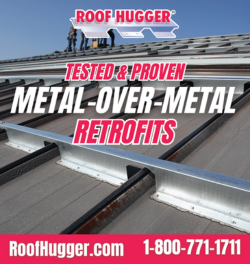
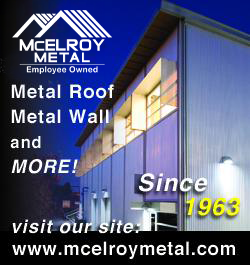

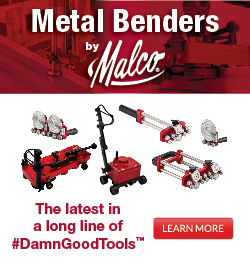









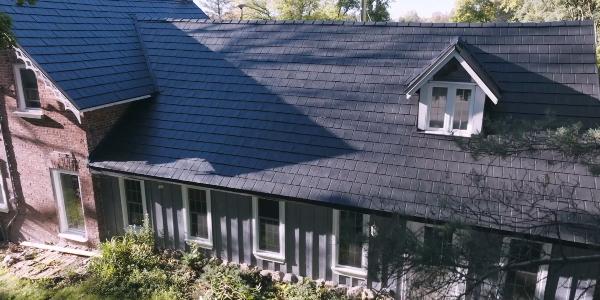




Comments
Leave a Reply
Have an account? Login to leave a comment!
Sign In